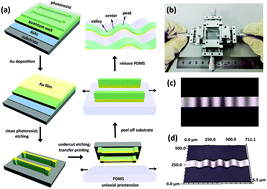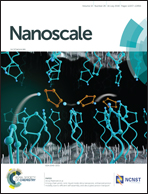A fully verified theoretical analysis of strain-photonic coupling for quantum wells embedded in wavy nanoribbons†
Abstract
For optoelectronic devices, an attractive research field involves the flexible adjustment of the band gap in semiconductor quantum well (QW) structures by strain engineering. However, rigid wafer-based technology enables lattice-misfit strain during epitaxial growth, which is biaxial, unchangeable, and not sufficient for the devices fitted on various irregular surfaces. Therefore, exploiting the strain produced by externally deformed configurations offers unique opportunities to continuously and non-defectively tune the QW's band structure. Here, we propose a strategy to induce uniaxially distributed strain in elaborately designed wavy quantum well nanoribbons (QWNRs). Meanwhile, a numerically solved strain-photonic coupling model based on the theory of elasticity and the eight-band k·p method is established to illustrate the strain distribution coupled with the strain-induced band gap shift of the wavy QWNR. The μ-photoluminescence measurements reveal a periodically varied band gap in the QW along the uniaxial tensile direction, which is consistent with the result of theoretical calculations. This model demonstrates the potential application of a wrinkled configuration in arbitrarily controlling and tuning the band gap and thus the optoelectronic performances of quantum well systems.



 Please wait while we load your content...
Please wait while we load your content...